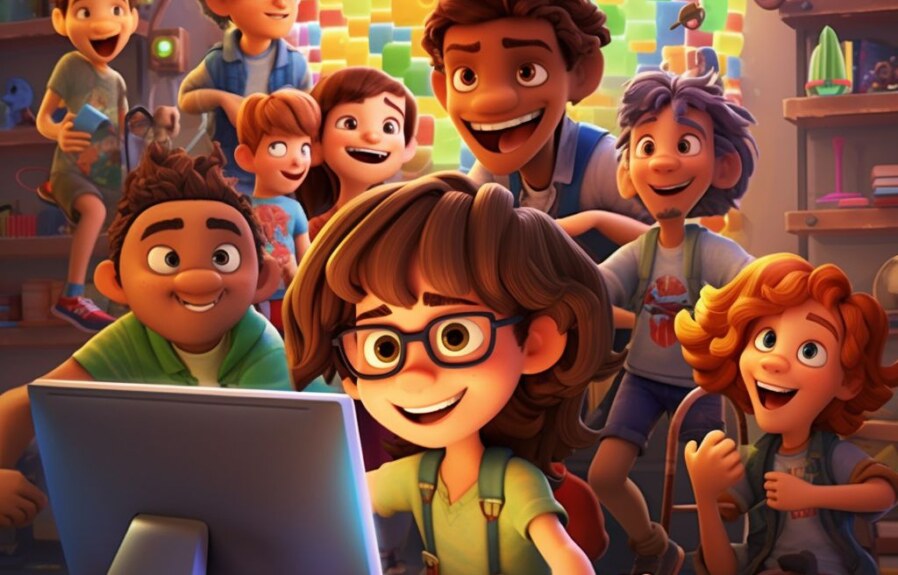Pixelating an image is the process of turning a high-resolution image into a low-resolution one that appears blocky, blurry, and unclear. It’s often used in graphic design and photography to create an artistic and abstract effect. Pixelation can also be used to disguise sensitive information or to protect privacy in images. In this article, we will explore the different ways to pixelate an image using various tools and software. Whether you’re a professional photographer or a hobbyist, knowing how to pixelate an image will surely come in handy in your design projects. So, let’s dive in!
1. Understanding Pixelation: What is it and Why Does it Happen?
Pixelation is a common effect that occurs in digital images when the resolution is too low or when an image is enlarged beyond its original size. This phenomenon happens because an image is made up of tiny squares, called pixels, which determine the clarity, quality, and level of detail of an image. When an image is pixelated, these squares become more visible, which results in a blurry, distorted, and chunky image.
Pixelation can occur for several reasons. One of the most common reasons is when an image is resized beyond its natural resolution. When an image is enlarged beyond its original size, the computer attempts to add new pixels to fill in the gaps, resulting in a loss of detail and clarity. Another common cause of pixelation is when an image has a low resolution. Low-resolution images tend to have fewer pixels, which can result in a pixelated appearance.
It’s essential to understand pixelation when working with digital images because it can impact the overall quality and effectiveness of your project. Pixelation can distract from the main focus of the image, making it difficult to perceive details, colors, and textures. However, with proper preparation and the right techniques, you can prevent pixelation from affecting the quality of your images.
2. Choosing the Right Image for Pixelation: Tips for Selection and Preparation
Pixelation can be a great way to add visual interest and uniqueness to your photography projects. However, before you can start applying pixelation techniques to your images, you need to choose the right photo and prepare it accordingly.
Tips for Selection
Choose High-Quality Images
To achieve the best results, you should start with a high-quality image that has a good resolution. The higher the resolution, the more detail the image will contain, which will make it easier to apply pixelation techniques.
Look for Simple Shapes
Images with simple shapes and distinct patterns tend to work best for pixelation effects. This is because they are easier to break down into smaller squares or polygons. Also, images with more pronounced edges and contrast tend to create more visually striking results.
Tips for Preparation
Crop Your Image
Before pixelating your image, it’s a good idea to crop it to the size that you want the final product to be. This will help you visualize the entire piece and ensure that every aspect of it is pixelated.
Adjust the Brightness and Contrast
It’s important to adjust the brightness and contrast of your photo before you pixelate it. This will help highlight the different shapes and colors in the image, making it easier to apply pixelation effects.
By following these tips, you can ensure that your image is well-suited for pixelation and that it will look great once the pixelation effect is applied.
3. Pixelation Techniques: From Blurring to Mosaic Filters
Pixelation is a technique in digital photography that uses a low-resolution image or a mosaic filter to blur the boundaries of an image. It is commonly used to create a pixelated effect that adds a unique touch to photographs. There are several pixelation techniques one can use to achieve this effect.
Blurring Technique:
This technique involves blurring the image to the point where the pixels become visible. It is a simple technique that can create a uniform pixelation effect. The degree of blurring can be adjusted to create a more or less pixelated image. This technique works best for images with simple shapes, lines, and forms.
Mosaic Filter:
This technique involves creating a mosaic pattern to pixelate an image. A mosaic filter typically consists of small squares of color that are arranged in a regular pattern. This technique works best for images with a lot of detail or complex shapes. Mosaic filters can be customized to create a specific pixelated effect.
It is important to note that pixelation can be applied to different levels to create different types of images. Pixelation can be used to add a subtle effect to an image or to completely transform it. Experimenting with different pixelation techniques can help you identify the best technique to use for different types of images.
In the next section, we will explore some of the top tools that you can use to apply pixelation effects to your photographs.
4. Top Tools for Pixelation: Exploring Software Options for Pixelation Effects
Pixelation is a versatile technique in which blurry graphics are converted into sharp images, making them less focused. It’s a popular way of adding visual interest to photos and videos, and enhancing social media content. It is possible to achieve different levels of pixelation through a variety of software applications and techniques.
Here are the top software options to consider for applying pixelation to your imagery:
1. GIMP
GNU Image Manipulation Program (GIMP) is an open-source image-editor that comes with an extensive set of built-in tools. The filters menu in the software offers an array of options for pixelation effects, with waveform, pixelize, and mosaic being the most popular filters. The software also supports layer based editing and color correction tools.
2. Adobe Photoshop
Adobe Photoshop is the industry standard in photo editing and pixelation. The software’s powerful tools are perfect for any level of pixelation, from subtle to extreme. Photoshop has an extensive set of filters and effects, including pixelate, mosaic, and crystallize. The software allows you to refine your pixelation using layer-based editing and adjustment layers.
3. ImageMagick
ImageMagick is a command-line image-editing program that offers extensive pixelation options. One of the standout features of ImageMagick is the ability to automate pixelation with batch processing. The software also supports a wide range of image formats including RAW, CGM, PNG, TIF, and BMP.
4. Paint.net
Paint.net is a user-friendly photo and image editing software that enables a range of pixelation effects. The software offers abstract mosaic, pixelate, and anisotropic filter options. Paint.net can be a good option for beginners who want to experiment with pixelation without having to learn complex software.
Try experimenting with these software options to find the one that suits your needs for pixelation. Each platform has its unique strengths, and with practice, you can master the technique of creating striking pixelated images.
5. Creating Pixelated Designs: Applying Pixelation to Enhance Your Photography Projects
Pixelation can be a creative way to enhance your photography projects and add a unique touch to your images. Here are a few ideas to inspire your pixelated designs:
1. Create Artistic Portraits
Pixelated portraits can add depth and creativity to your design. By pixelating certain aspects of your subject’s face, you can accentuate their features and give the image an artistic twist. This technique works best for high-resolution photographs with good lighting and minimal background distractions.
2. Design an Abstract Background
Pixelation can also be used as a background effect to add texture and depth to your images. Mosaic filters, in particular, can create a captivating abstract pattern that can complement your subject. This is a great design technique for posters and advertisements.
3. Add Emphasis to Specific Elements
Pixelation can be used to strategically emphasize specific areas of an image. For example, you may choose to pixelate only the background and highlight the main subject to draw the viewer’s attention to it. Alternatively, you may choose to pixelate only a particular color or texture to create a dramatic effect.
Pixelation is a versatile and creative technique that can add a unique touch to your photography projects. By experimenting with different pixelation techniques and tools, you can create striking designs that will captivate your audience.
People Also Ask
What does it mean to pixelate an image?
Pixelating an image means to reduce its resolution or clarity by replacing small pixel blocks with larger ones. This method is a privacy technique used by people who want to hide sensitive information from being easily readable.
Why pixelate an image?
Pixelating an image often applies when people want to keep some information for themselves while displaying the overall concept of the picture. It is a popular technique that is used in censoring private information in pictures, such as blurred faces or license plates in a car.
How do you pixelate an image in Photoshop?
Using the ‘Pixelate’ filter in Adobe Photoshop, it is easy to pixelate an image. Select the area you want to pixelate, go to the ‘Filter’ drop-down menu, select ‘Pixelate,’ and then click ‘Mosaic’ or ‘Pointillize.’
How do you pixelate an image in Paint?
Pixelating an image in Microsoft Paint is a bit tricky, but it can be done. Select the part of the image that needs to be pixelated using the ‘Select’ tool. Next, go to the ‘Resize’ icon and select the ‘Pixelation’ option, adjusting the pixel size as required.
Is there any online tool to pixelate an image?
Yes, there are many online tools to pixelate an image. Pixelate Image Online, LunaPic, and Fotor are a few examples of online free tools that allow you to pixelate an image without needing to install any software.
Conclusion
Pixelating an image is a simple image-editing technique that can be used for privacy concerns or creative design purposes. It is easy to learn and use in popular image-editing software such as Adobe Photoshop or Microsoft Paint. Free online tools also take care of this technique without needing special software installation and provide convenient image editing experience.



